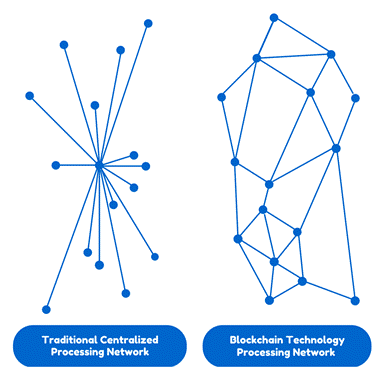Enterprise Mobility & the Connected Worker Blog
Could Blockchain be the Future of Mobile Communication?
Facebook Looks to Integrate Blockchain Technology into its Platform
Facebook is launching a new blockchain initiative – and no, it’s not to create FaceCoin, nor any other ‘app’tly named cryptocurrency. The head of their Messenger app, David Marcus, has been appointed to run a blockchain dedicated team that will comprise fewer than a dozen people for now, a handful of whom are Instagram high-ups. The team’s goal is to “explore how to best leverage blockchain across Facebook, starting from scratch,” tweeted Marcus. Here at VDC, we are especially interested in the employment of blockchain as a communication network. As our lives and business practices are increasingly connected to the internet, cybersecurity becomes ever more important. Though largely unproven today, blockchain-driven communication networks look to be a promising security solution to be used by consumers, enterprises, and governmental agencies. Here’s why:

Non-Blockchain Communication
At the moment, almost all messaging platforms rely on sender-to-server communication where information passes through and is stored in a centralized database. The current system is easy to use and has many integrated features, but it could be safer. Centralized databases are vulnerable to monitoring and are targets for cyber-attackers who can access enormous amounts of information with a single breach. The security of the current system has been improved by encryption initiatives, but two years ago, academics at Johns Hopkins discovered that the encryption within Apple’s iMessage could be chipped away; although the process required serious computing power, attackers could tamper with encrypted message data, adjusting it until they reveal the original message. More recently, Apple announced a new safeguard to defend against this type of threat. While current non-blockchain encryption does offer a significant level of safety, hackers and cybersecurity providers have been engaged in an arms race since its inception.
Blockchain Communication
Communication through a blockchain network is more secure and would be a big leap ahead for cybersecurity. Blockchain is a digital ledger that uses cryptography to process and record digital transactions. New transactions are built upon the historical structures within the blockchain and are only processed if validated by a majority of the nodes (computers in the network). The interconnection of the system minimizes the risk of fraud. What does this all mean for the blockchain user? It means that blockchain networks are a highly secure and accurate way to make and record digital transactions. As a communication network, there is potential for blockchain to improve the security of instant messaging and file sharing, and its ability to ensure that records of transactions are accurate provides additional utility to corporate and governmental users at times when it’s necessary to identify who said what at what time.

Facebook is not the only company interested in blockchain’s utility as a communication network. In April of this year, a company called Crypviser launched what they proclaim to be “the first blockchain-driven instant communication platform.” Available on Apple’s App Store and online, Crypviser markets its safe communication service to consumers, government institutions, medical organizations, financial institutions, and businesses. “Imagine an average person who is annoyed by the lack of security in popular social networks,” says Crypviser, “or a business owner who has already suffered devastating losses due to corporate espionage.” As a new company, it is yet to be seen whether Crypviser will be widely adopted by its target users, but future use cases for the underlying technology look promising. If Facebook, Crypviser, or any other emerging player is able to showcase a user-friendly blockchain communication network, then enterprises, financial institutions, government agencies, and whoever else is concerned with the transmission of sensitive information would likely be eager to get their hands on tailor-made deployments of the technology.
View the 2018 Enterprise Mobility & Connected Devices Research Outline to learn more.